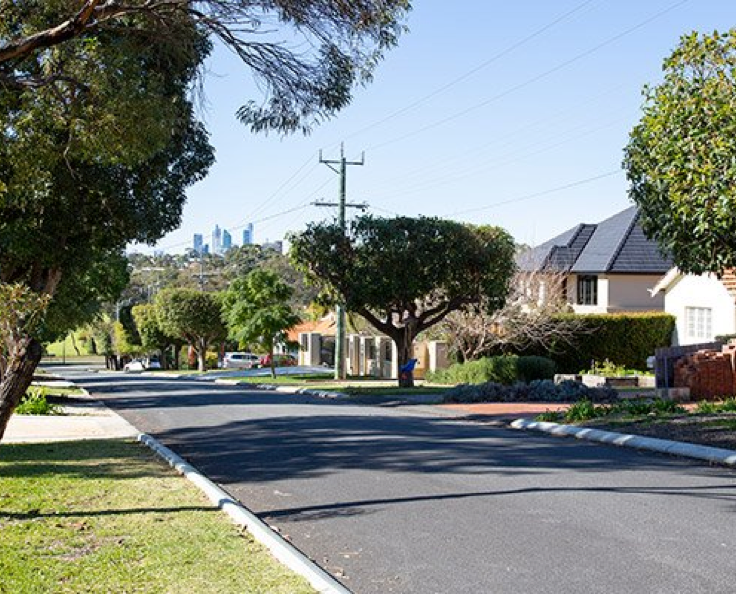Home and Contents Insurance to Cover Your Property in the Event of a Bushfire
Home and Contents Insurance to Cover Your Property in the Event of a Bushfire
*iSelect does not compare to all home and contents insurers in the market. The availability of policies may change from time to time. Not all policies made available from iSelect’s providers are compared by iSelect and due to commercial arrangements, area or availability, not all policies compared by iSelect will be available to all customers. See below for our range of home and contents insurers. Some policies are only available from iSelect’s call centre or online. Our advice on this website is of general nature and does not consider your situation or needs. Consider if any advice is appropriate for you before acting on it. Learn more.
Compare home and contents insurance the easy way*
Save time and effort by comparing a range of home and contents insurance policies with iSelect
Protecting your Home and Contents in the event of a bushfire
How insurance for bushfires works
How much does bushfire cover cost?
How to make a claim after a bushfire
Find bushfire cover
Bushfire season and living in potential fire zones are part of modern Australian life. Every summer, the dry heat brings the risk of fire damage to potentially thousands of homes in most states and territories.
Learning how to reduce the risks and knowing the type of bushfire insurance policies available can help protect your home and your financial future.
Protecting your Home and Contents in the event of a bushfire
If you live in or near a potential bushfire zone, the good news is you can take steps to reduce the risk of fire damage to your home and its contents. These steps include:
Prepare your home against fire: Reducing the risk of having to leave your home means preparation. This can include clearing your gutters of leaves or twigs, owning hoses that are long enough to reach around your property, repairing gaps in your walls or roof, and cleaning up wood piles, branches and other debris around your home.
Building or renovating to state or territory bushfire building standards: New buildings or extensions may need building permit requirements if they are in a fire prone area.1Department of Transport & Planning – Building in bushfire prone areas Not only do you need to ensure you comply to a national bushfire construction standard, but you may also require a Bushfire Attack Level (BAL) Assessment to make everything safe.
Landscaping for bushfires: Planning, designing and planting your garden to be fire safe can play a big role in reducing the risk of fire damage.2CFA (Country Fire Authority) – Landscaping This includes plant selection, choosing a location away from the house and appropriate water supply.
Purchasing Home and Contents insurance: Taking out an appropriate insurance policy can help you reduce the significant financial impact of a fire.
Risks of buying a house in a bushfire prone area
The Australian bush is known for its bushfires, but fire prone areas come in many shapes and sizes, including:
- Coastal scrub
- Rural grasslands and paddocks
- Dense or open bush
- Grassland and town borders
- Bushland and town borders
Some residential areas may be at risk and even if there’s no dense bush near your home, you could still be in a potential fire zone. Each state and territory (such as Victoria) maps fire-prone areas, so you can check out the risk of different areas before jumping into the property market.3CFA (Country Fire Authority) – Am I at Risk?
How insurance for bushfires works
Depending on the type of policy you have, your Home and Contents Insurance may already cover fire damage. Also, these types of cover aren’t just limited to bushfires but may also include storms and floods cover.
Home and Contents Insurance products can vary across insurers, so it’s a good idea to check exactly what you’re covered for in the Product Disclosure Statement (PDS) before an incident occurs where you’d need to make a claim. Exclusions and caps can vary between insurers and some insurers may have special terms and conditions.
Bushfires are typically covered in two different ways within home insurance policies:
- Total replacement cover: This helps cover costs for the total market value of your home to rebuild it to its original state
- Sum-insured cover: This is a more common policy and helps provide cover for a nominated total amount to rebuild your home
How much does bushfire cover cost?
The devastating 2019-2020 Australian bushfire season caused $4-5 billion in damage.4WWF – Horror bushfire season cost Aussie farmers up to $5 billion For individual property owners, the cost of rebuilding is significant so having insurance cover in place can make a big difference. A range of Home Insurance policies with bushfire coverage can have different monthly and annual premiums depending.
Here are some questions to consider when you’re ready to compare bushfire cover under different Home Insurance policies:
- Does the policy cover you specifically for bushfires?
- Does it cover all bushfire-related damage, including where there was no flame?
- Are other types of natural disasters covered under this policy?
- In the event of a claim, what does the insurer need before cleanup begins?
- Does the policy cover cleanup? What does this cover specifically include?
- Does the insurer offer total replacement cover?
- What is the price difference between total replacement cover and sum-insured cover?
- Does the insurer offer a sum-insured policy extension?
- Does the policy cover emergency accommodation or extras like demolition and debris removal?
- If so, is this in addition to the sum-insured amount?
How to make a claim after a bushfire
If your home is damaged in a bushfire, you should tell your insurer as soon as possible. Giving them as much detail as you can and answering all questions accurately can help them process your claim quicker. Even if you can’t access your home to assess the damage, you can still contact your insurer to get the claims process started.
To be able to claim, the event must be one that is insured on your policy. It’s important to review the Product Disclosure Statement (PDS) for information about policy coverage and limitations. Insurers will typically assess the damage to your property during an onsite visit before any repairs are done. They may also want to approve your repairer or builder.
You can usually start emergency repairs before your claim is processed but keep clear records of all damage and repairs (including photos, videos, receipts for work). It’s also important to read what you can or can’t repair before you speak to your insurer, as this may compromise your claim. Wherever possible, let your insurer know what you plan to do before you do it.
Find bushfire cover
If your home is within a fire zone and you’re particularly concerned about bushfires, it’s a good idea to read policies carefully to see exactly what they cover. Home Insurance covers various events and cover will depend on the specific wording in your policy.
iSelect can help you compare* policies from our range of Home and Contents providers.

.svg)






